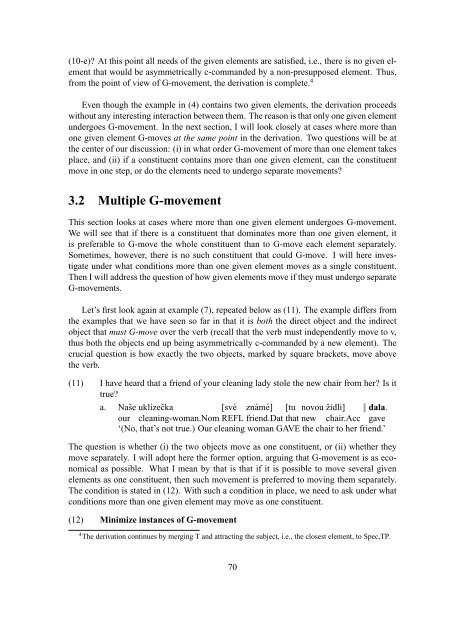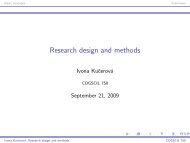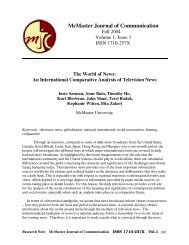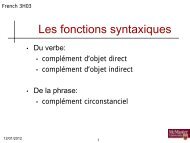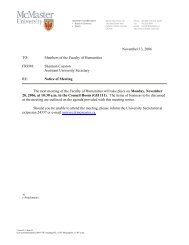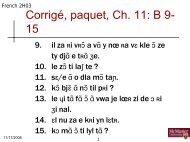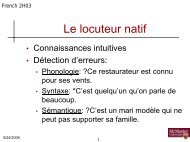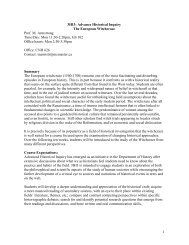The Syntax of Givenness Ivona Kucerová
The Syntax of Givenness Ivona Kucerová
The Syntax of Givenness Ivona Kucerová
Create successful ePaper yourself
Turn your PDF publications into a flip-book with our unique Google optimized e-Paper software.
(10-e)? At this point all needs <strong>of</strong> the given elements are satisfied, i.e., there is no given element<br />
that would be asymmetrically c-commanded by a non-presupposed element. Thus,<br />
from the point <strong>of</strong> view <strong>of</strong> G-movement, the derivation is complete. 4<br />
Even though the example in (4) contains two given elements, the derivation proceeds<br />
without any interesting interaction between them. <strong>The</strong> reason is that only one given element<br />
undergoes G-movement. In the next section, I will look closely at cases where more than<br />
one given element G-moves at the same point in the derivation. Two questions will be at<br />
the center <strong>of</strong> our discussion: (i) in what order G-movement <strong>of</strong> more than one element takes<br />
place, and (ii) if a constituent contains more than one given element, can the constituent<br />
move in one step, or do the elements need to undergo separate movements?<br />
3.2 Multiple G-movement<br />
This section looks at cases where more than one given element undergoes G-movement.<br />
We will see that if there is a constituent that dominates more than one given element, it<br />
is preferable to G-move the whole constituent than to G-move each element separately.<br />
Sometimes, however, there is no such constituent that could G-move. I will here investigate<br />
under what conditions more than one given element moves as a single constituent.<br />
<strong>The</strong>n I will address the question <strong>of</strong> how given elements move if they must undergo separate<br />
G-movements.<br />
Let’s first look again at example (7), repeated below as (11). <strong>The</strong> example differs from<br />
the examples that we have seen so far in that it is both the direct object and the indirect<br />
object that must G-move over the verb (recall that the verb must independently move to v,<br />
thus both the objects end up being asymmetrically c-commanded by a new element). <strong>The</strong><br />
crucial question is how exactly the two objects, marked by square brackets, move above<br />
the verb.<br />
(11) I have heard that a friend <strong>of</strong> your cleaning lady stole the new chair from her? Is it<br />
true?<br />
a. Naše uklízečka<br />
[své známé] [tu novou židli] || dala.<br />
our cleaning-woman.Nom REFL friend.Dat that new chair.Acc gave<br />
‘(No, that’s not true.) Our cleaning woman GAVE the chair to her friend.’<br />
<strong>The</strong> question is whether (i) the two objects move as one constituent, or (ii) whether they<br />
move separately. I will adopt here the former option, arguing that G-movement is as economical<br />
as possible. What I mean by that is that if it is possible to move several given<br />
elements as one constituent, then such movement is preferred to moving them separately.<br />
<strong>The</strong> condition is stated in (12). With such a condition in place, we need to ask under what<br />
conditions more than one given element may move as one constituent.<br />
(12) Minimize instances <strong>of</strong> G-movement<br />
4 <strong>The</strong> derivation continues by merging T and attracting the subject, i.e., the closest element, to Spec,TP.<br />
70


